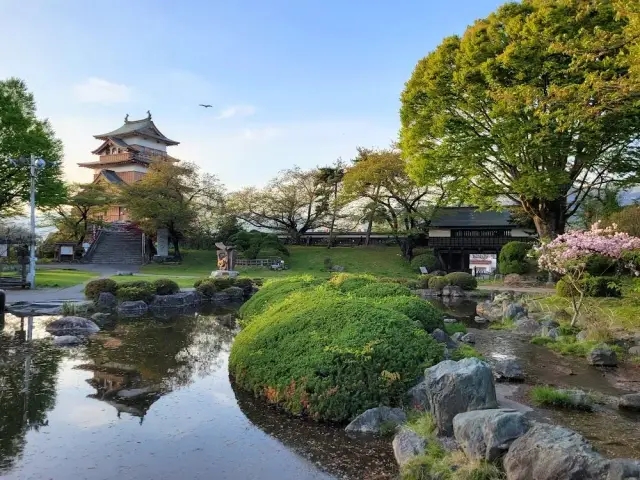https://www.dekitabi.com/itinerary/matsumoto-day-trip-suwa-lake
Nestled in the picturesque Suwa region of Nagano Prefecture, Japan, lies a treasure trove of cultural and historical landmarks that offer a glimpse into the rich heritage of the area. Among these, Suwa Taisha Shrine Shimosha Akimiya, Takashima Castle, Suwa Taisha Shrine Kamisha Main Shrine, and Suwa Taisha Shrine Kamisha Maemiya stand out as must-visit sites for history enthusiasts and cultural explorers. Each site holds a unique significance and provides visitors with an opportunity to delve into Japan’s fascinating past.
Suwa Taisha Shrine Shimosha Akimiya: A Sacred Gateway

https://www.dekitabi.com/attraction/suwa-taisha-shimosha-akimiya
The Suwa Taisha Shrine Shimosha Akimiya, located in the southern part of Suwa City, is an integral part of the Suwa Taisha Shrine complex. This shrine, revered for its spiritual significance, is dedicated to the deity Takeminakata, known as the protector of agriculture and industry. The Shimosha Akimiya is famed for its tranquil setting and historic architecture.
The shrine’s primary hall features a traditional thatched roof and wooden structure, reflecting the architectural style of ancient Japanese religious buildings. Visitors are greeted by a serene approach lined with ancient trees, adding to the shrine’s spiritual ambiance. The annual festivals held here, including the Suwa Taisha Onbashira Festival, draw thousands of visitors who come to witness traditional rituals and celebrations that have been passed down through generations.
For those interested in Japanese spirituality and traditional practices, the Shimosha Akimiya provides a profound experience. The shrine’s historical artifacts and sacred rituals offer insight into the Shinto religion and the cultural practices that have shaped the region’s identity.
Takashima Castle: Echoes of Feudal Japan

https://www.dekitabi.com/attraction/takashima-castle
Takashima Castle, situated on a hill overlooking Suwa City, is a testament to Japan’s feudal past. Originally constructed in the early 17th century by the Takashima clan, the castle served as a strategic military outpost and administrative center during the Edo period. Although the original structure was dismantled in the late 19th century, the castle’s ruins and reconstructed elements provide a vivid glimpse into Japan’s feudal era.
Visitors to Takashima Castle can explore the remaining stone walls, moats, and gatehouses that once formed part of the castle’s fortifications. The castle grounds are also home to a museum that showcases historical artifacts, including samurai armor, weaponry, and documents related to the castle’s history.
One of the highlights of visiting Takashima Castle is the panoramic view from the castle grounds. From this vantage point, visitors can enjoy sweeping vistas of Suwa Lake and the surrounding landscape, making it an ideal spot for photography and contemplation.
Suwa Taisha Shrine Kamisha Main Shrine: The Heart of the Suwa Taisha Complex

https://www.dekitabi.com/attraction/suwa-taisha-kamisha-honmiya
The Suwa Taisha Shrine Kamisha Main Shrine, or Kamisha Honmiya, is the central shrine of the Suwa Taisha complex. This prestigious shrine is dedicated to the deity Suwa Daimyojin and holds great importance in the Shinto religion. The Kamisha Main Shrine is renowned for its grand architecture and historical significance.
The shrine’s main hall, with its imposing presence and intricate wooden carvings, reflects the grandeur of traditional Shinto architecture. The sacred grounds are adorned with beautifully maintained gardens and ancient trees, creating a serene atmosphere that invites reflection and reverence.
One of the key features of the Kamisha Main Shrine is its association with the Suwa Taisha Onbashira Festival, one of Japan’s most famous festivals. This event, held every six years, involves the transport of massive logs from the mountains to the shrine in a dramatic and physically demanding ritual. The festival is a testament to the local community’s dedication and the deep-rooted cultural traditions that continue to thrive in the Suwa region.
Suwa Taisha Shrine Kamisha Maemiya: A Hidden Gem

https://www.dekitabi.com/attraction/suwa-taisha-kamisha-maemiya
Suwa Taisha Shrine Kamisha Maemiya, or Kamisha Maemiya Shrine, is a lesser-known but equally significant part of the Suwa Taisha complex. Located slightly apart from the main shrine, Kamisha Maemiya is dedicated to the deity of prosperity and protection. The shrine’s tranquil setting and smaller scale make it a hidden gem for visitors seeking a more intimate experience.
The Kamisha Maemiya Shrine features a charming traditional architecture with a thatched roof and wooden beams, reflecting the classic Shinto style. The surrounding area is known for its peaceful ambiance, with fewer crowds and a more relaxed atmosphere compared to the larger shrines.
Visitors to Kamisha Maemiya can enjoy leisurely strolls through the shrine’s grounds, explore the smaller shrines and altars, and participate in traditional rituals. The shrine is also known for its beautiful seasonal displays, including cherry blossoms in spring and vibrant autumn leaves, offering a picturesque backdrop for visitors throughout the year.
Conclusion
The Suwa region, with its rich tapestry of historical and cultural landmarks, offers a captivating journey through Japan’s past. Suwa Taisha Shrine Shimosha Akimiya, Takashima Castle, Suwa Taisha Shrine Kamisha Main Shrine, and Suwa Taisha Shrine Kamisha Maemiya each provide unique insights into the area’s heritage and spiritual practices. Whether you’re drawn to the grandeur of ancient shrines, the echoes of feudal history, or the serene beauty of hidden gems, Suwa promises a memorable and enriching experience for all who visit.


Leave a Reply